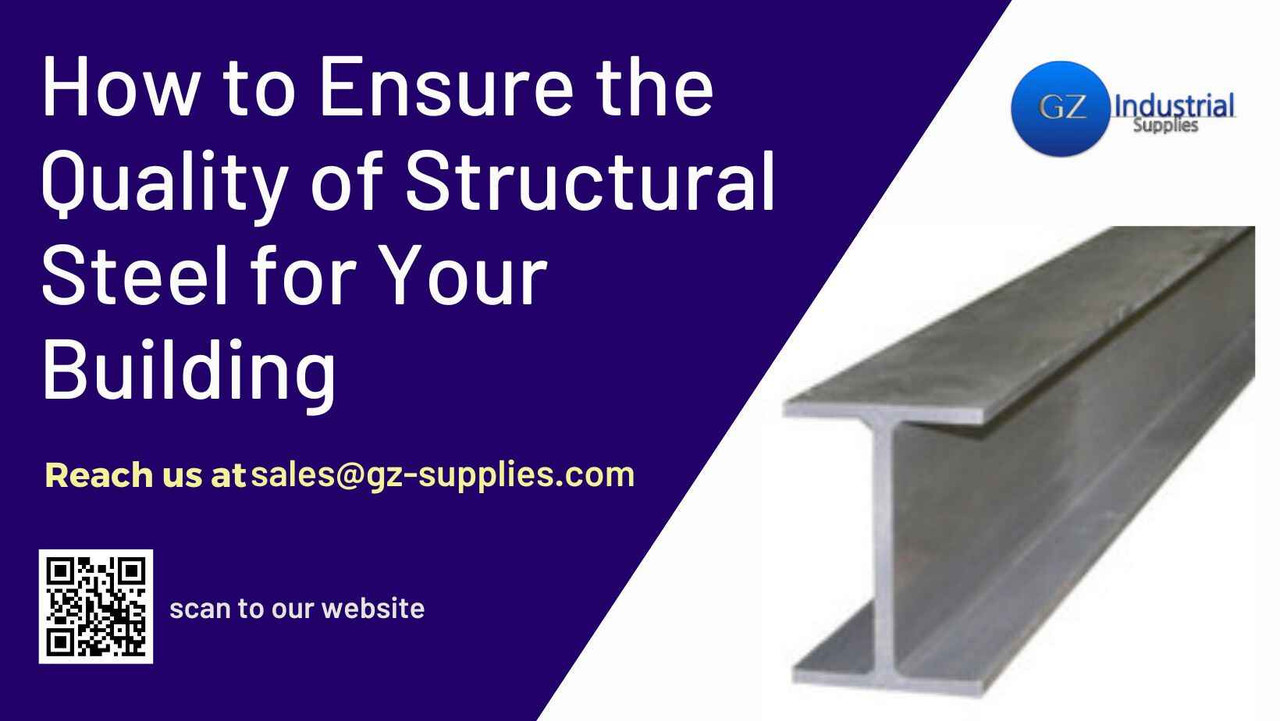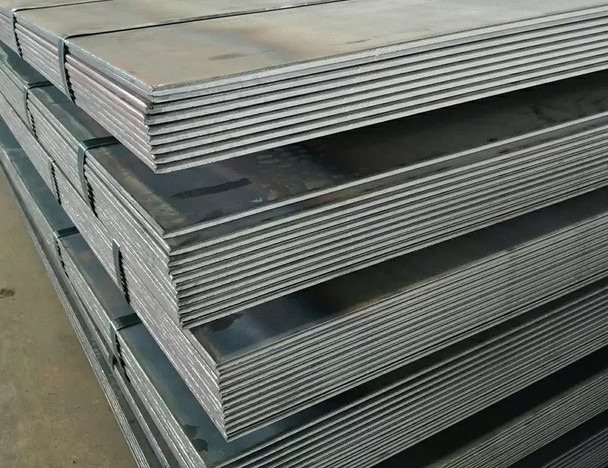How to Ensure the Quality of Structural Steel for Your Building
Key Takeaway
- Understand Steel Types: Familiarize yourself with different types of structural steel (carbon, alloy, stainless) and their applications.
- Adhere to Standards: Follow industry standards such as ASTM and ISO for material quality and performance specifications.
- Choose Reliable Suppliers: Select suppliers with certifications and a strong reputation for quality assurance.
Introduction
When constructing a building, the materials used play a critical role in determining its safety, durability, and overall performance. Among these materials, structural steel is pivotal due to its strength-to-weight ratio, versatility, and resilience. Ensuring the quality of structural steel not only enhances the building’s integrity but also safeguards against potential failures and costly repairs.
This process begins with a thorough understanding of the different types of steel available, such as carbon, alloy, and stainless steel, each suited for specific applications. Selecting a reliable supplier who adheres to industry standards like ASTM and ISO is crucial, as these standards dictate the material's quality and performance specifications. Rigorous inspections should be conducted throughout the fabrication and installation phases to identify any potential issues early on.
Proper handling, transportation, and storage practices further mitigate the risk of damage or corrosion. By actively engaging project managers and engineers in continuous quality control and promptly addressing any discrepancies, you can ensure that the structural steel used in your project meets the highest standards, ultimately contributing to the safety and longevity of the building
This article aims to guide you through essential practices and considerations to ensure you procure high-quality structural steel for your construction projects.
Structural Steel H-Beam Size 300x300 80Kg Hellog
Understanding Structural Steel
Types of Structural Steel
Structural steel is categorized based on its composition and applications. Understanding these types can help in making informed decisions:
1. Carbon Steel: The most common type, primarily composed of iron and carbon. It is known for its strength and toughness and is often used in a variety of building structures.
2. Alloy Steel: This steel incorporates additional elements (such as manganese, nickel, or chromium) to enhance specific properties. Alloy steels can be designed to withstand higher temperatures and are often used in more demanding structural applications.
3. Stainless Steel: Known for its corrosion resistance, stainless steel is ideal for structures exposed to harsh environmental conditions. Although more expensive, its longevity and minimal maintenance requirements make it a worthwhile investment in certain contexts.
Common Applications in Construction
Structural steel is employed in various applications due to its versatility:
1. Frameworks: Used to create the skeleton of buildings, providing the necessary support for floors, roofs, and walls.
2. Bridges: Steel is a preferred material for bridges due to its strength and ability to span long distances without excessive supports.
3. Industrial Buildings: Factories and warehouses benefit from the quick assembly and expansive open spaces that steel structures provide.
Quality Standards and Specifications
To ensure the quality of structural steel, it's essential to adhere to recognized industry standards. Two of the most prominent organizations setting these standards are:
1. ASTM (American Society for Testing and Materials): ASTM provides a range of specifications for various types of steel, outlining the required properties and testing methods.
2. ISO (International Organization for Standardization): ISO standards ensure that materials meet international quality criteria, promoting consistency and safety across global markets.
Key Specifications to Look For
When assessing the quality of structural steel, several critical specifications should be considered:
1. Yield Strength: This indicates the maximum stress that a material can withstand without permanent deformation. Higher yield strength means better performance under load.
2. Tensile Strength: This measures the resistance of steel to being pulled apart. It's vital for structures that will experience tension.
3. Chemical Composition: The specific elements within the steel can significantly affect its properties, including strength, ductility, and corrosion resistance. Always check the chemical makeup against relevant standards.
Structural channel steel 80x40 UPN(L) x6mm
Selecting a Reliable Supplier
Researching Potential Suppliers
Choosing a trustworthy supplier is crucial in securing quality structural steel. Here are some steps to consider:
1. Certifications and Credentials: Ensure that suppliers are certified by relevant industry bodies, indicating adherence to quality standards.
2. Reputation and Reviews: Look for suppliers with positive feedback and a proven track record. Client testimonials can provide insights into their reliability and quality.
Questions to Ask Suppliers
Engaging with suppliers directly can help clarify their quality assurance processes:
1. Quality Assurance Processes: Inquire about the measures they implement to ensure the quality of their steel products.
2. Traceability of Materials: It's important that the supplier can trace the source of their materials, ensuring they meet all relevant standards.
Inspection and Testing Procedures
Importance of Inspections
Regular inspections are critical for ensuring that the structural steel meets all quality and safety standards. Inspections can detect potential issues before they escalate, safeguarding the overall integrity of the building.
Types of Inspections
There are various types of inspections that can be conducted:
1. Visual Inspections: This is the first line of defense against potential issues. Trained professionals examine the steel for visible defects, such as rust, cracks, or misalignments.
2. Non-Destructive Testing (NDT): This method allows for the assessment of material properties without causing damage. Common NDT techniques include ultrasonic testing, magnetic particle testing, and radiographic testing. Each method has its specific applications, enabling detailed insights into the material's condition.
Third-Party Inspection Services
Engaging third-party inspection services can provide an unbiased assessment of the steel quality. These professionals are trained to identify issues that might be overlooked and can offer detailed reports, ensuring compliance with all relevant standards.
Structural steel sheet pile 12mm Hellog for construction use
Fabrication Quality Control
Key Processes in Steel Fabrication
The quality of structural steel is heavily influenced by the fabrication process, which includes several key steps:
1. Cutting: Accurate cutting is essential to maintain the integrity of the steel and ensure that all components fit together correctly.
2. Welding: This is a critical process that joins steel pieces together. It’s important that welding is performed by skilled professionals who adhere to recognized standards.
3. Coating: Applying protective coatings can prevent rust and corrosion. Ensuring that coatings are applied correctly is vital for the longevity of the steel.
Importance of Following Standards During Fabrication
Adhering to industry standards during fabrication ensures that the structural steel will perform as expected under various conditions. This includes meeting specifications related to dimensional tolerances, welding procedures, and coating applications.
Ensuring Proper Documentation and Tracking
Proper documentation is essential for maintaining a clear record of the materials used and the processes followed. This includes:
1. Material certifications
2. Inspection reports
3. Test results
Keeping these documents organized aids in future inspections and ensures compliance with regulations.
Structural Steel 6000x 1500x10mm Steel Plates
Handling and Transportation
1. Best Practices for Transporting Structural Steel
Transportation of structural steel must be done carefully to avoid damage. Best practices include:
1. Using appropriate lifting techniques to prevent bending or deforming the steel.
2. Securing loads properly to prevent shifting during transit.
3. Inspecting the steel upon arrival to ensure no damage occurred during transportation.
2. Handling Techniques to Avoid Damage
When handling steel on-site, ensure that:
1. Workers are trained in proper handling techniques.
2. Equipment is suitable for the weight and dimensions of the steel.
3. Importance of Proper Storage Conditions
Once on-site, structural steel should be stored in a manner that prevents corrosion or damage. Key storage practices include:
1. Keeping steel off the ground using pallets or platforms.
2. Protecting steel from moisture and extreme weather conditions.
On-Site Quality Assurance
Role of Project Managers and Engineers
Project managers and engineers play a crucial role in quality assurance on-site. They must:
1. Ensure that all materials delivered match the specifications.
2. Coordinate inspections during the installation process.
Continuous Monitoring During Installation
Monitoring the installation process helps catch any issues early. This includes:
1. Regular inspections of the work being done.
2. Ensuring that workers adhere to the specified procedures and standards.
Addressing Issues and Discrepancies On-Site
Quickly addressing any discrepancies or issues that arise during construction is vital. This may involve:
1. Re-inspecting faulty materials.
2. Adjusting procedures to rectify errors.
Common Challenges and Solutions
Identifying Potential Quality Issues
Throughout the construction process, various challenges may arise that can compromise the quality of structural steel. Common issues include:
1. Rust and Corrosion: Exposure to moisture can lead to rust, weakening the steel over time. It’s crucial to apply protective coatings and ensure proper storage to mitigate this risk.
2. Deformations: Improper handling or transportation can result in bends or dents. Regular inspections during transport and installation can help identify these issues early.
Strategies for Mitigating Risks
To minimize risks associated with structural steel quality, consider implementing the following strategies:
1. Regular Maintenance: Periodic inspections and maintenance of the structural components can prolong the lifespan of the steel and prevent failures.
2. Upgrading Materials and Techniques: Stay informed about advancements in steel technology and consider incorporating new materials or techniques that enhance quality and durability.
Structural Steel Sheet Pile 12mm Hellog
Frequently Asked Questions
1. What should I look for when choosing a structural steel supplier?
Look for certifications, a good reputation, and clear quality assurance processes. Ask for references or client testimonials.
2. How often should I inspect structural steel?
Inspections should be conducted at multiple stages: during fabrication, upon delivery, and throughout the installation process.
3. What are the consequences of using low-quality structural steel?
Using low-quality steel can lead to structural failures, increased maintenance costs, and potential safety hazards for occupants.
4. Are third-party inspections necessary?
While not mandatory, third-party inspections provide an unbiased evaluation and can help ensure compliance with standards.
5. How can I prevent rust on structural steel?
Apply protective coatings, ensure proper storage conditions, and conduct regular maintenance inspections to detect early signs of corrosion.
Readers Also Watched...
Related Articles
How to Choose the Right Structural Steel Material for Your Project
Structural Steel Grades: Choosing the Right Material for Your Project
What Types of Structural Steel are Used in Building Construction in Nigeria?
Conclusion
Ensuring the quality of structural steel is essential for the safety and longevity of your building. By understanding the types of steel, adhering to industry standards, selecting reliable suppliers, and implementing rigorous inspection processes, you can significantly mitigate risks and enhance the structural integrity of your projects. Prioritizing quality at every stage—from selection to installation—will lead to safer and more durable constructions.
To ensure the highest quality structural steel for your next project, partner with GZ Industrial Supplies. With a commitment to quality and customer satisfaction, GZ Industrial Supplies offers a range of structural steel products and expert guidance. Visit GZ Industrial Supplies to explore our offerings and get started on your project today!













